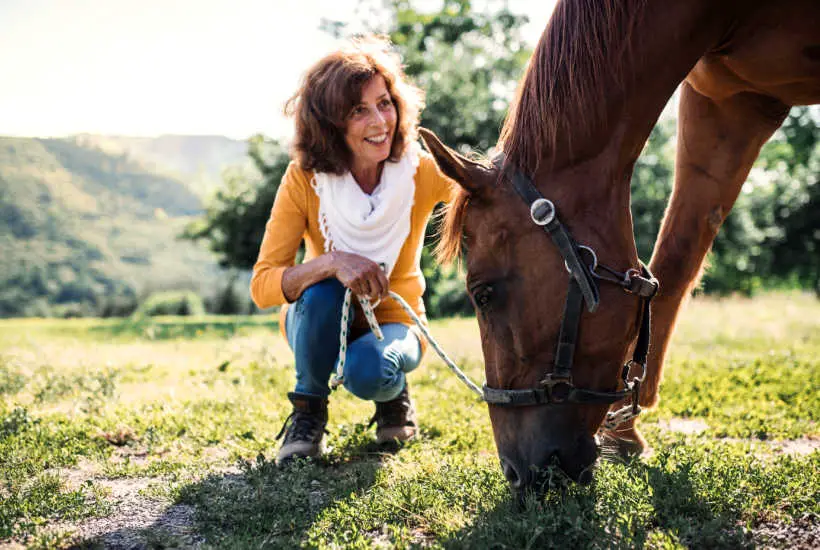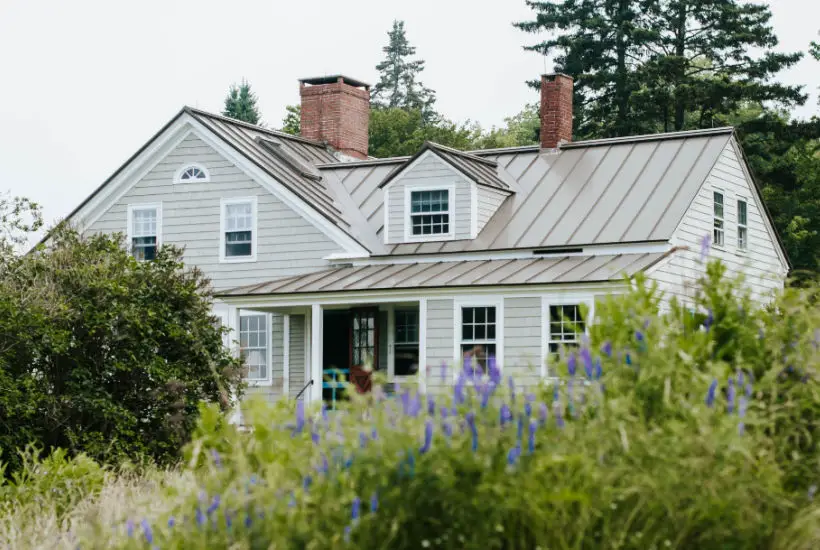Ranch life can be enriching for the entire family. Consider whether you want to live on a hobby ranch or somewhere that can be truly self-sufficient. Hard work goes into even the smallest of ranches, so be prepared for the commitment.
Growing up on a ranch, your children will learn a wide range of life skills. It will instill a strong work ethic and teach them about nature. Ensure your partner is on board with the idea and give your kids the chance to express their opinions. This article shares some of the key reasons ranch life could be perfect for your growing family.

Give Your Family Privacy And Space
Ranches provide plenty of space and privacy for your family. Your closest neighbors could be upwards of a mile away. Living on a ranch offers the space for a family to grow and children to explore nature safely.
The distance between ranches in Texas can vary widely depending on a variety of factors, including the size of the ranches, the location, and the terrain. Some of the largest ranches in Texas cover hundreds of thousands of acres, while others may be smaller family-owned operations.
In general, ranches in Texas are often spread out over large areas of land, with significant distances between them. This is especially true in rural areas where there may be few neighboring properties or towns. For example, the King Ranch, one of the largest ranches in Texas, covers over 825,000 acres and spans across six counties. The 6666 Ranch, another large Texas ranch, covers over 266,000 acres in the Panhandle region.
However, there are also smaller ranches and properties located closer together, particularly in more populated areas of the state. In some cases, neighboring ranchers may work together to share resources or collaborate on projects.

Enjoy The Fresh Air
Ranch life offers much cleaner air than living in a city or suburb. Children raised in the countryside are less likely to suffer from ailments like cancer in later life.
The air quality in the Texas countryside can vary depending on a variety of factors, including weather patterns, industrial activity, and transportation emissions.
According to the United States Environmental Protection Agency (EPA), the air quality in Texas has improved in recent years, but some areas of the state still experience high levels of air pollution. In particular, the Houston-Galveston-Brazoria area and the Dallas-Fort Worth area have been designated as nonattainment areas for certain air pollutants, meaning that they do not meet federal air quality standards.
As of August 2021, the air quality index (AQI) in some rural areas of Texas ranged from “good” to “moderate,” indicating that the air quality was generally acceptable for most individuals. However, there were also some areas where the AQI was classified as “unhealthy for sensitive groups,” indicating that individuals with respiratory or cardiovascular issues may experience health effects from exposure to air pollutants.
It is important to note that air quality can vary depending on the specific location and time of year. Individuals concerned about air quality in their area should check local air quality reports and take appropriate precautions to protect their health.

Find Some Beautiful Real Estate In Texas
Choose the right ranch property for your requirements. Consider your skills and what you want to make from the ranch. For instance, if you’re raising livestock, you will need adequate space. If you want to grow crops, you need suitable soil. Look at some of the excellent Texas Hill Country homes for sale from the professional real estate agents at Texas Land.
Ranches are located throughout Texas, with many in the central and southern parts of the state. Some of the most popular areas for ranching in Texas include the Hill Country, South Texas, West Texas, and the Panhandle.
The Hill Country region, which includes cities such as Fredericksburg and Kerrville, is known for its rolling hills, scenic vistas, and abundant wildlife. South Texas, which includes the Rio Grande Valley and the Gulf Coast, is known for its warm climate and diverse range of flora and fauna.
West Texas, which includes cities such as Midland and Odessa, is known for its vast stretches of open land and oil production. The Panhandle region, which includes cities such as Amarillo and Lubbock, is known for its cattle ranches and wheat fields.

Be Prepared For Hard Work
Ranching means long hours and hard work with no days off. Ensure your family understand the tasks they need to complete to help out on the ranch. Take on ranch hands to help if you can.
Living on a Texas ranch can offer opportunities for families to bond while working together to keep the ranch running. Children can learn about how the ranch operates by being given age-appropriate tasks and there is also time for them to play and be kids.
Ranching has a rich legacy in Texas and exploring this legacy from a cultural perspective can offer students a glimpse into what life was like for people working and thriving on Texas ranches. Additionally, some luxury ranches in Texas can be rented for a weekend to experience the lifestyle.

Connect With Nature
Working the land allows you to connect with nature. Living in the country gives you opportunities to explore and enjoy the natural beauty of Texas. Take regular camping, hunting and hiking trips to get the most out of it.
Texas is a large and diverse state with a wide variety of landscapes and ecosystems. The countryside in Texas includes rolling hills, grasslands, forests, and deserts. The state has a total land area of approximately 268,581 square miles (695,662 square kilometers), with about 97% of this area classified as rural.
The Hill Country region, located in central Texas, is known for its scenic vistas, limestone cliffs, and crystal-clear rivers. The region covers an area of approximately 25,000 square miles (64,750 square kilometers) and includes cities such as Austin, Fredericksburg, and Kerrville.
The South Texas region, which includes the Rio Grande Valley and the Gulf Coast, is known for its warm climate, coastal wetlands, and abundant wildlife. The region covers an area of approximately 44,000 square miles (113,960 square kilometers) and includes cities such as Corpus Christi, Brownsville, and McAllen.
West Texas, located in the western part of the state, is known for its vast stretches of open land, rugged terrain, and oil production. The region covers an area of approximately 97,000 square miles (251,230 square kilometers) and includes cities such as Midland, Odessa, and El Paso.
The Panhandle region, located in the northern part of the state, is known for its cattle ranches, wheat fields, and wide-open spaces. The region covers an area of approximately 26,000 square miles (67,340 square kilometers) and includes cities such as Amarillo, Lubbock, and Wichita Falls.
Overall, the countryside in Texas offers a wide range of natural beauty and outdoor recreational opportunities for residents and visitors alike.

Spend Quality Time Bonding As A Family
Working together to keep a ranch running gives you plenty of time to bond as a family. Give younger children age-appropriate tasks and help them learn about how the ranch runs. Give them time to play and be kids and avoid overworking them. Support your kids as they adapt to ranch life.
Involving children in running a ranch in Texas can be a great way to teach them responsibility, work ethic, and the value of hard work. Depending on their age and ability, children can be given age-appropriate tasks such as feeding animals, gathering eggs, or helping with basic ranch maintenance. It is important to ensure that children are supervised and given proper safety training when working on the ranch.
In addition to chores, children can also be involved in other aspects of ranch life such as participating in rodeos, learning to ride horses, or exploring the natural environment around the ranch. Many ranches in Texas offer educational programs and activities for children, such as nature hikes, birdwatching, or stargazing. These activities can help children develop an appreciation for the natural world and the importance of conservation.
Finally, involving children in the decision-making process can also be a valuable learning experience. Children can be given input on things like what animals to raise, what crops to plant, or how to manage the ranch’s resources. This can help them develop critical thinking skills and a sense of ownership and responsibility for the ranch.

Be part of history
Ranching has a rich history in Texas that dates back to the 16th century when Spanish explorers brought cattle to the region. Cattle ranching became a major industry in the 1800s, with cowboys driving herds of cattle to railheads in Kansas and other states.
Many of the largest and most famous ranches in Texas were established during this time, including the King Ranch, the XIT Ranch, and the 6666 Ranch. Ranching became an integral part of Texas culture, with cowboys and ranchers becoming iconic figures in literature, film, and popular culture.
Today, ranching is still an important part of the Texas economy, with the state having more ranches and more cattle than any other state. Running a ranch in Texas involves a variety of tasks, including managing livestock, maintaining equipment and buildings, and dealing with weather and environmental challenges.
Ranchers must also stay up-to-date on industry regulations and market trends in order to remain competitive. Despite the challenges, many Texans are proud to carry on the tradition of ranching and to preserve this important part of the state’s history and culture.

Become self-sufficient
Becoming self-sufficient when living on a Texas ranch requires careful planning, hard work, and a willingness to learn new skills. Here are some steps that can help you become more self-sufficient:
- Grow your own food: Planting a vegetable garden and fruit trees can provide a source of fresh produce for your family. You can also raise livestock for meat, dairy, and eggs.
- Collect rainwater: Texas is prone to droughts, so collecting rainwater can be an important way to ensure a steady supply of water for your ranch. Installing a rainwater harvesting system can help you collect and store rainwater for later use.
- Generate your own power: Installing solar panels or wind turbines can provide a source of renewable energy for your ranch, reducing your dependence on the grid.
- Practice conservation: Conserving resources such as water and energy can help you become more self-sufficient and reduce your environmental impact. Simple practices like turning off lights and conserving water can make a big difference.
- Learn new skills: Living on a ranch requires a wide range of skills, from animal husbandry to carpentry. Taking classes or workshops, or learning from experienced ranchers, can help you develop the skills you need to be more self-sufficient.
- Barter and trade: Trading goods and services with neighbors and other ranchers can help you become more self-sufficient and build a sense of community.
- Store and preserve food: Learning to can, freeze, and dry food can help you preserve your harvest and reduce food waste.

Long term investment
Buying a ranch in Texas could be also a great investment, which will grow in time and can be passed on the next generation.
The cost of a ranch in Texas can vary widely depending on a variety of factors, including the size of the property, the location, the quality of the land, and the presence of improvements such as buildings and infrastructure. Here are examples of large ranches in different locations in Texas and their prices
- Turkey Track Ranch: This ranch includes 80,000 acres of land in the northern Texas Panhandle and is known for its abundant water and wildlife. The ranch was listed for sale for $200 million
- Brewster Ranch: This ranch spans 424,000 acres and 57 miles in West Texas, making it one of the biggest ranches in Texas. It was assembled from 22 historic ranch properties, many dating back to the late 1800s. The ranch was listed for sale for $320 million
- 2,000-Acre Ranch in East Texas: This ranch includes 2,000 acres of land in East Texas and features a 10,000-square-foot lodge, a pool, and a lake. The ranch was listed for sale for $17.5 million
- 1,000-Acre Ranch in Hill Country: This ranch includes 1,000 acres of land in the Hill Country region of Texas and features a main house, guest house, and swimming pool. The ranch was listed for sale for $12.5 million
Examples of small ranches in different locations in Texas and their prices
- 20-Acre Ranch in Hill Country: This ranch includes 20 acres of land in the Hill Country region of Texas and features a 3-bedroom home, a barn, and a pond. The ranch was listed for sale for $695,000
- 22-Acre Ranch in North Texas: This ranch includes 22 acres of land in North Texas and features a 4-bedroom home, a barn, and a pond. The ranch was listed for sale for $750,000
- 30-Acre Ranch in East Texas: This ranch includes 30 acres of land in East Texas and features a 3-bedroom home, a barn, and a pond. The ranch was listed for sale for $1.2 million
- 33-Acre Ranch in Central Texas: This ranch includes 33 acres of land in Central Texas and features a 4-bedroom home, a barn, and a pond. The ranch was listed for sale for $1.5 million
This blog post was originally written on 7 March 2022 and last updated and facts checked on 7 August 2023.

Leave a Reply